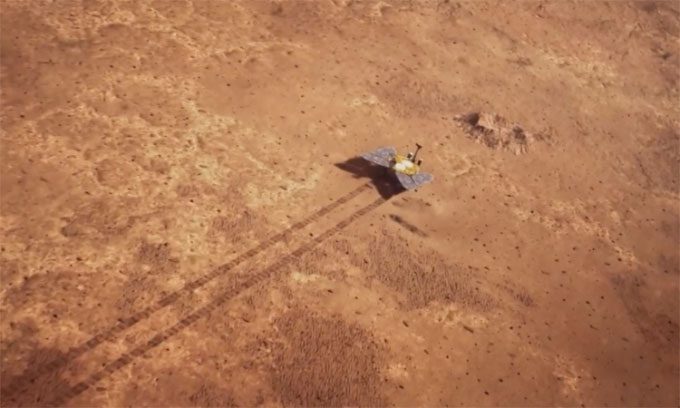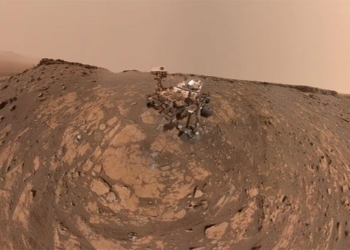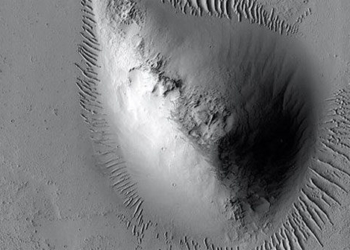Engineers Prepare Measures to Help the Chinese Rover Zhurong Survive a 6-Month Martian Winter with Dust Storms and Temperatures as Low as -100 Degrees Celsius.
Zhurong, the Chinese rover operating on Mars, is ready to face the winter on the planet, CGTN reported on May 3. During winter, nighttime temperatures on Mars can drop below -100 degrees Celsius, with a high likelihood of dust storms. Additionally, winter here lasts approximately 6 months on Earth. This harsh environment poses significant challenges for Zhurong.

Simulation of Zhurong rover operating on Mars. (Photo: China Media Group)
To cope with the frequent dust storms during winter and ensure the rover operates safely, engineers have developed Zhurong with capabilities to withstand low temperatures, resist dust, maintain power supply, and other functionalities.
“Firstly, the solar panels installed in the rover’s ‘wings’ are made from a special material known as superhydrophobic material. Just like how lotus leaves cause water droplets to slide off, this material helps dust to be easily blown away,” said Peng Song, deputy chief designer of the Tianwen-1 probe, which launched Zhurong to Mars in May 2021.
Zhurong’s solar wings are also capable of tracking the sun’s direction, allowing them to adjust their position as the sun rises, much like sunflowers, thereby maximizing energy absorption despite the low sun angle during winter.
The third measure to help Zhurong cope with winter is to conserve and reduce energy consumption by altering its operational patterns in windy and dusty weather.
According to Peng, if these three measures do not resolve the energy issues, the rover will enter a sleep mode until the dust clears. At that point, it will automatically wake up and resume operations.
Two selfies taken by Zhurong on May 19, 2021, and January 22, 2022, show dust gradually covering the rover’s surface over time. “So far, everything seems safe and stable. However, dust can affect the power generation of the solar wings. Dust reduces electricity generation efficiency, leading to energy shortages,” Peng noted.
To generate sufficient energy for Zhurong, the expert team has designed solar wings large enough to absorb more energy. “At this point, the rover’s energy absorption, storage, and supply have met our initial design expectations. For the upcoming harsh winter, we have prepared corresponding plans and appropriate strategies,” shared Zhang Rongqiao, chief designer of the Tianwen-1 mission.
As of May 1, Zhurong has been operational for 342 Martian days and has traveled over 1,900 meters south from its landing site in Utopia Planitia, a vast plain in the northern hemisphere of the Red Planet.





















































